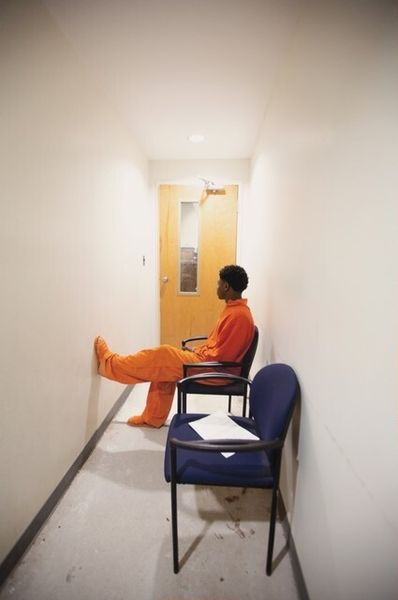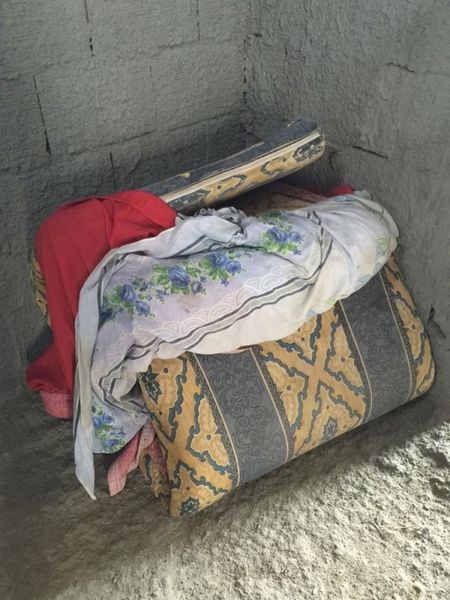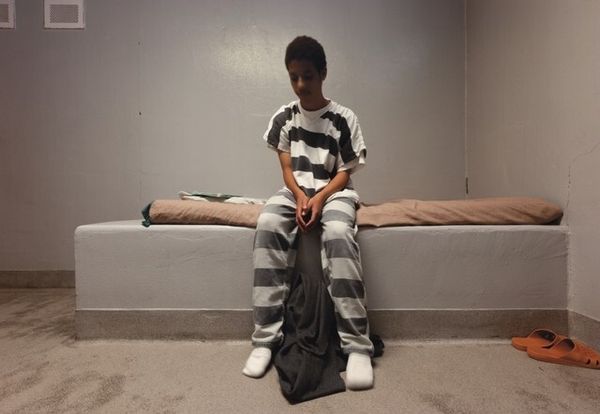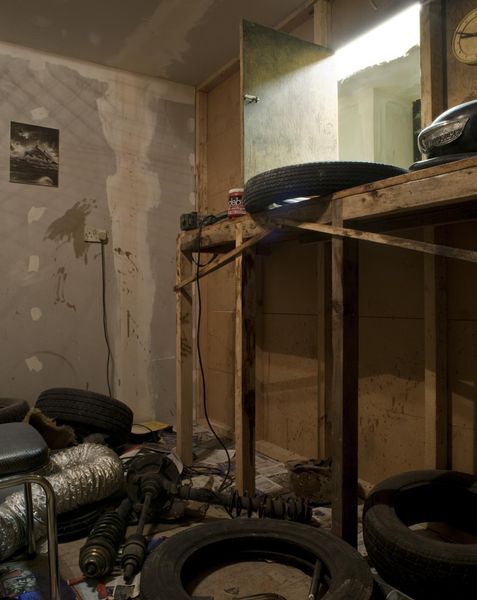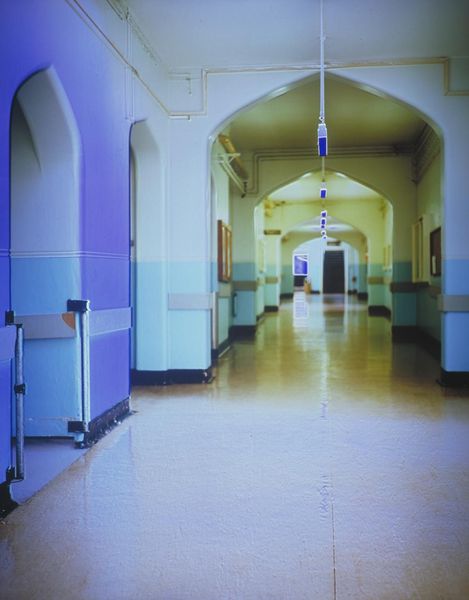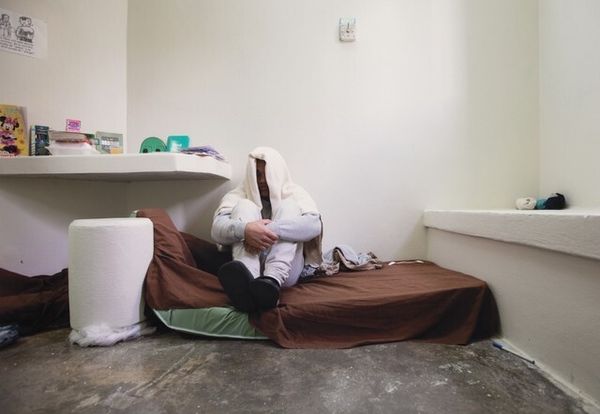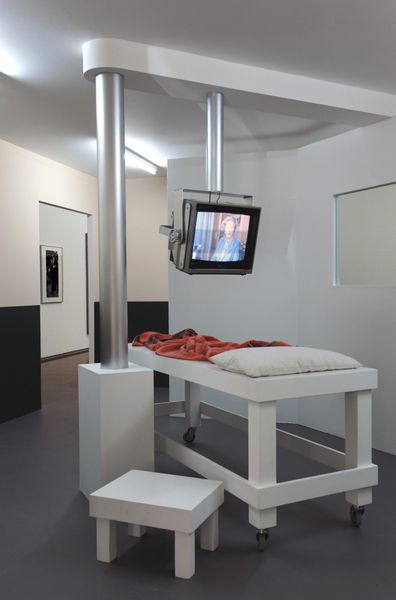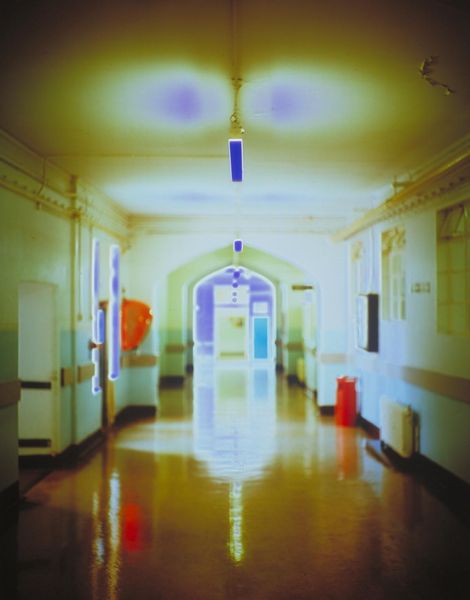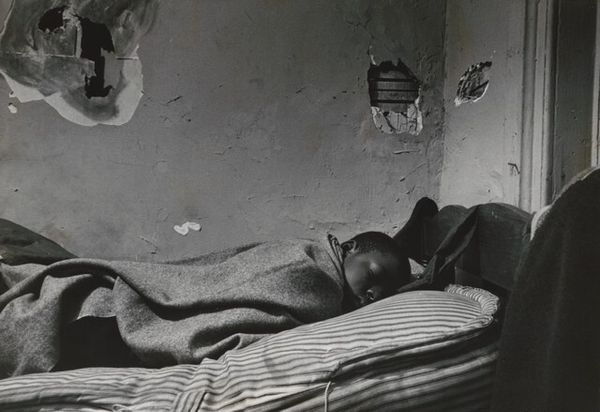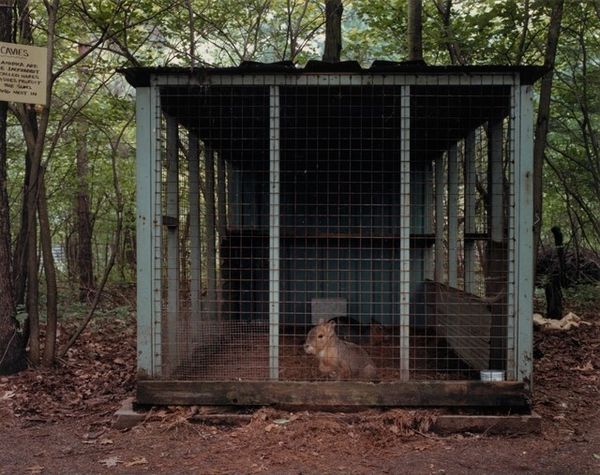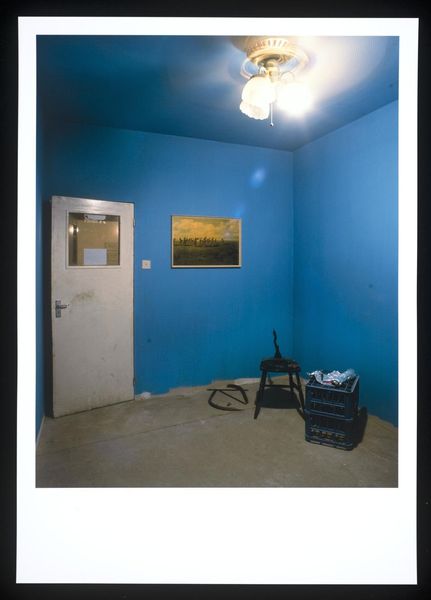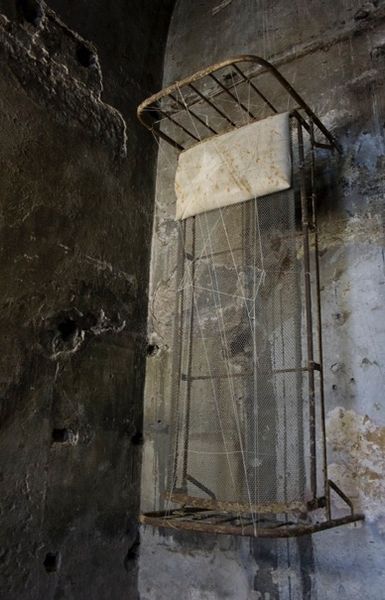
photography
#
surveyor photography
#
contemporary
#
building site documentary shot
#
figuration
#
photography
Dimensions: image: 37.2 × 55.9 cm (14 5/8 × 22 in.) sheet: 43.2 × 61 cm (17 × 24 in.)
Copyright: National Gallery of Art: CC0 1.0
Editor: So, here we have Richard Ross’s photograph, "Hawaii," taken in 2009. It’s a stark image of what appears to be a detention facility or prison cell. What strikes me is the way the materials – the metal beds, the worn surfaces, the graffiti – seem to tell a story of neglect and confinement. What do you see when you look at this photograph? Curator: I see a powerful document of social control, rendered visible through the materials of incarceration. Consider the beds themselves: their uniform size and arrangement suggest a systematized approach to processing bodies, almost like an assembly line. What are these beds made of? Cheap metal frames topped with thin mattresses, signaling a lack of care for the human beings subjected to them. The graffiti is important too. Editor: Right, the graffiti, I noticed it... the worn surfaces imply... Curator: The marks suggest an attempt to resist erasure. Names, dates, maybe even small expressions of defiance etched into the metal. They mark labor of a sort: the labor of those who have been subjected to carceral spaces, and their efforts to exert a sort of agency upon them. Think of the physical effort involved in creating such marks on metal – the persistence, the hope, even. The labor is literally scratched onto the beds, becoming a material record of resistance. Does the location strike you as odd? Editor: It's very bleak considering the name. “Hawaii” seems intentionally ironic, highlighting the disparity between the idealized image of paradise and the reality of this space. What is the photographer trying to express by connecting "Hawaii" and this scene? Curator: Exactly. By titling the photograph "Hawaii," Ross forces us to confront the uncomfortable realities hidden behind idyllic facades. It’s not just about a specific location, but about the larger system of incarceration, a global apparatus fuelled by capitalism and sustained through material means. These materials, cheap yet robust, facilitate control. What do you make of that juxtaposition? Editor: It challenges us to question the narratives we tell ourselves about justice and freedom. Thank you. Curator: And it reminds us to look closely at the materials that shape our social realities.
Comments
No comments
Be the first to comment and join the conversation on the ultimate creative platform.
